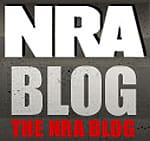A Brief History of the M14 Rifle: A Time of Transition
By NRAHQ
Note: This article was originally posted on NRA Blog: http://bit.ly/2j5seap
USA -(Ammoland.com)- In the aftermath of World War II, it was widely recognized that the American .30-06 M1 Garand semi-automatic rifle gave U.S. forces a decisive edge in combat. While faster than the bolt-actions used by other countries, the semi-automatic Garand was still limited by its eight-round en-bloc clip by which rounds were loaded into the firearm.
Following the war, armies sought the benefits of a semi-auto rifle chambered for rounds similar to the .30-06 and 8mm Mauser that had been used in the recent conflict. This resulted in the development and adoption of main battle rifles – full power, select-fire rifles with 20-round detachable box magazines. Overseas, these included Germany’s Heckler & Koch G3 and Belgium’s FN FAL. Here in the U.S. the M14 emerged.

The M14 was designed to replace the Garand, as well as the M1 and M2 carbines and the M3 and M3A1 submachine guns. These new rifles – the M14 included – were most often chambered for the 7.62x51mm NATO round, similar to the commercial .308 Winchester, and were widely used by NATO forces through the Cold War. One …Read the Rest
Source:: AmmoLand

Leave a Reply